🐕 Are Samoyeds Hypoallergenic Dogs? No, Here's Why🔍 Quick Facts: Samoyed
Hypoallergenic:
❌ No
Shedding Level:
🔥 Very High
Grooming Needs:
⚡ High
Good for Allergies:
❌ No
Weight:
35-65 lbs (16-30 kg)
Height:
19-24 in (48-61 cm)
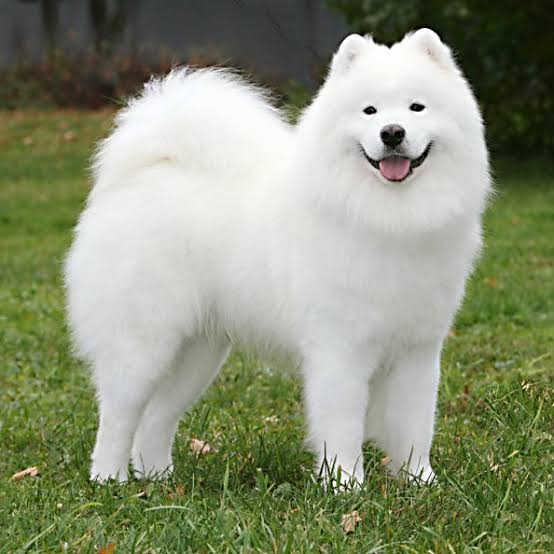
Beautiful Samoyed showcasing their thick, fluffy double coat - the main reason they're not hypoallergenic
⚡ Quick Answer
No, Samoyeds are not hypoallergenic dogs.
These beautiful Arctic dogs have a thick double coat that sheds heavily year-round and produces significant amounts of dander. With their intense seasonal shedding periods and constant grooming needs, Samoyeds may be particularly challenging for people with dog allergies.
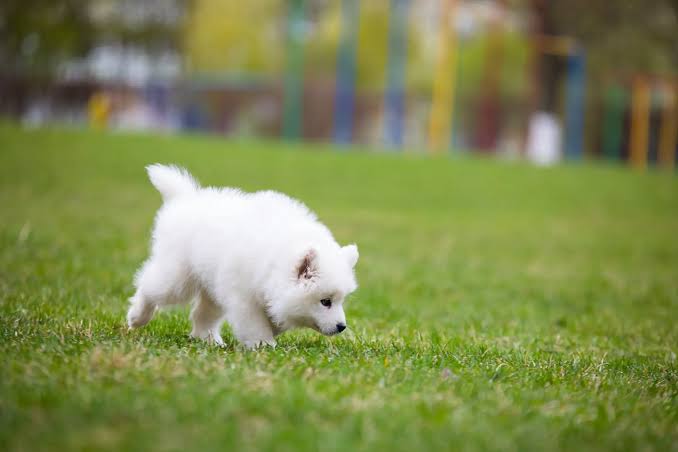
Even Samoyed puppies have dense, fluffy coats that will shed significantly as they mature
🔬 What Makes a Dog Hypoallergenic?Understanding hypoallergenic dogs requires knowing what triggers allergic reactions. Dog allergies are primarily caused by proteins found in dander (dead skin cells), saliva, and urine - not by the hair itself. True hypoallergenic breeds typically share these characteristics: • Minimal shedding: Less hair means fewer allergens spreading around your home • Single coat: No dense undercoat that traps and releases dander • Hair instead of fur: Grows continuously and falls out less frequently • Reduced dander production: Some breeds naturally produce fewer allergen proteins Important fact: Studies show that about 10% of the US population (approximately 33 million people) is allergic to dogs, making breed selection crucial for sensitive individuals. ⬆️ Back to Menu❌ Why Samoyeds Are Not Hypoallergenic🌪️ Shedding PatternSamoyeds are known for heavy shedding. They experience year-round shedding plus two major seasonal "blowouts" where they lose massive amounts of undercoat. During these periods (typically spring and fall), you'll find white fur coating everything in your home. 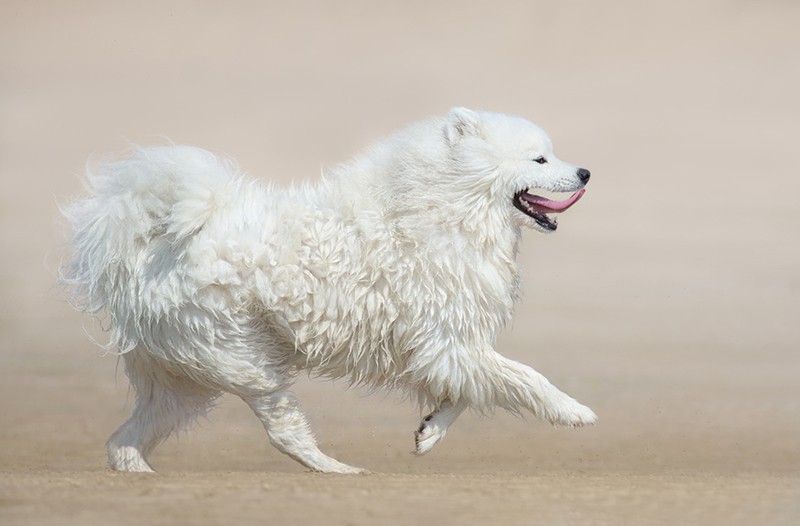
Active Samoyeds spread their allergen-laden fur wherever they go, making outdoor activities a consideration for allergy sufferers
Fascinating statistic: A single Samoyed can lose enough fur during seasonal shedding to fill multiple large garbage bags. Some owners report brushing out 2-3 pounds (0.9-1.4 kg) of fur per week during peak shedding seasons! 🧥 Coat Type and CharacteristicsSamoyeds possess a thick double coat consisting of: • Dense undercoat: Soft, woolly fur that traps dander and sheds extensively • Guard hairs: Longer outer coat that also carries allergens • Weather-resistant properties: The coat is designed to hold air and moisture, which also means it holds allergens This double-layer system was essential for survival in Siberian temperatures, but it makes them challenging for allergy sufferers. 💨 Dander ProductionSamoyeds produce significant amounts of dander due to their large size and active nature. Their constant movement and outdoor activities mean they're continuously generating and distributing allergen particles throughout your living space. 
A beautiful family of Samoyeds, though worth considering the potential allergenic impact
✂️ Grooming RequirementsSamoyeds require daily brushing and professional grooming every 6-8 weeks. Ironically, while regular grooming helps manage shedding, the grooming process itself releases clouds of allergens into the air. ⚠️ Grooming Reality: Many Samoyed owners with mild allergies find that grooming sessions trigger reactions, requiring them to wear masks or have someone else handle the grooming. 🤧 Samoyeds and Allergy SufferersFor people with dog allergies, living with a Samoyed can be quite challenging. The combination of heavy shedding, large size, and active nature means constant exposure to allergens. 
While Samoyeds are joyful companions, their allergen production can cause significant discomfort for sensitive individuals
Common symptoms experienced by allergy sufferers around Samoyeds include: • Severe sneezing and runny nose • Itchy, watery eyes • Skin reactions and hives • Breathing difficulties and asthma attacks • Persistent coughing Medical insight: Allergists report that Samoyeds are frequently mentioned by patients as one of the more problematic breeds for triggering reactions, even in people with previously mild symptoms. ⬆️ Back to Menu🔄 Alternatives for Allergy Sufferers🐕🦺 Similar Hypoallergenic BreedsIf you love the Samoyed's personality but need a hypoallergenic alternative, consider these breeds:

While adorable, this Samoyed puppy will grow into a heavy-shedding adult that could be challenging for allergy sufferers
🔍 What to Look ForWhen selecting a hypoallergenic alternative, prioritize: • Single coat breeds with minimal undercoat • Hair rather than fur that grows continuously • Breeds known for low dander production • Regular grooming requirements that you can maintain • Size appropriate for your living space 🔍 Find Your Perfect Hypoallergenic CompanionReady to find the perfect hypoallergenic dog breed for your lifestyle? Our interactive breed selector considers your specific needs, living situation, and allergy sensitivity to recommend the best matches. Discover which hypoallergenic breeds are perfect for your family in just 2 minutes! 💡 Tips for Samoyed Owners with Mild AllergiesIf you already have a Samoyed and experience mild allergic reactions, these strategies may help reduce your symptoms: 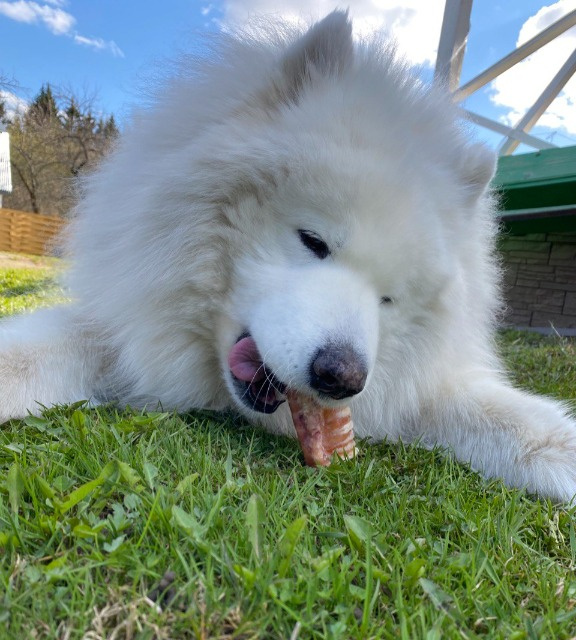
Keeping feeding and grooming activities outdoors can help minimize indoor allergen buildup
🧹 Regular Grooming (by someone else): Daily brushing removes loose fur and dander before it spreads. Have a non-allergic family member handle this task. 💨 High-Quality Air Purifiers: Use HEPA filters in main living areas and bedrooms. Change filters monthly during peak shedding seasons. 🏠 Frequent Deep Cleaning: Vacuum with a HEPA filter vacuum daily, wash fabrics weekly in hot water, and steam clean carpets monthly. 🚫 Bedroom Restrictions: Keep your Samoyed out of bedrooms and establish allergen-free zones in your home. 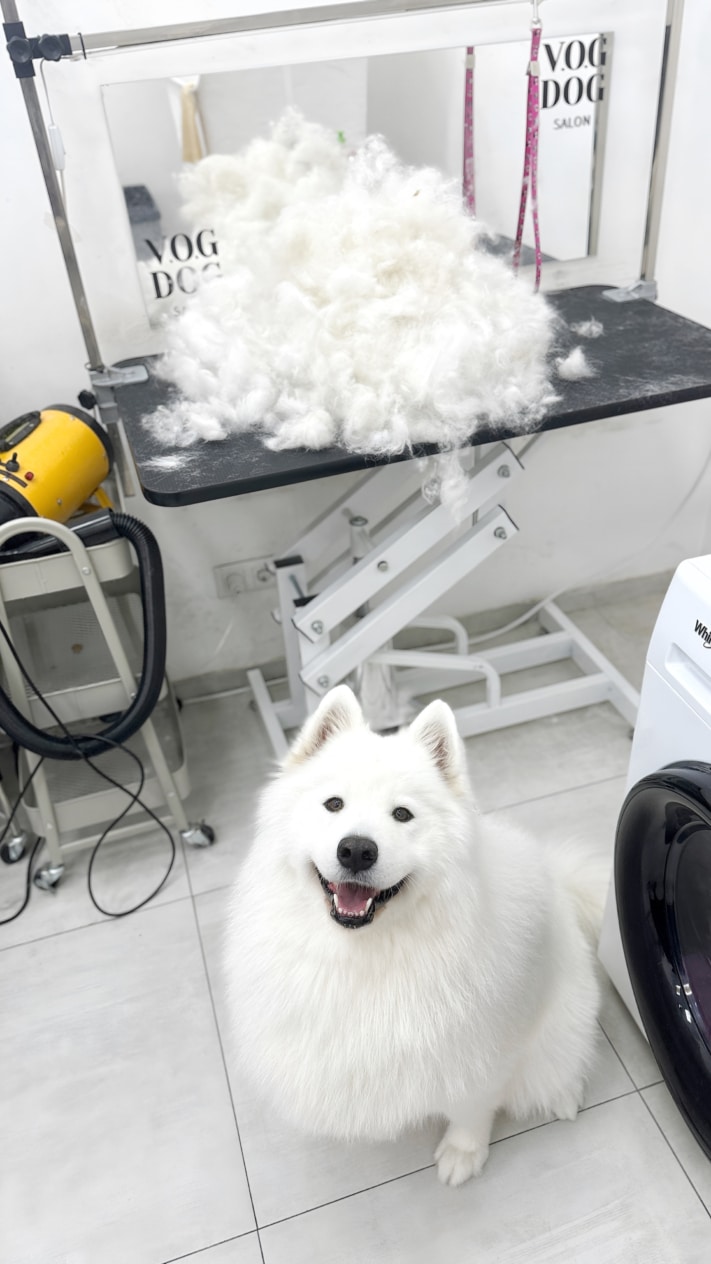
Professional grooming helps manage shedding but should be done outside the home for allergy sufferers
🧴 Allergy-Reducing Shampoos: Use specially formulated shampoos that reduce dander production. Bathe your Samoyed every 4-6 weeks. 💊 Medication Management: Work with your doctor to find appropriate antihistamines or allergy medications that help manage symptoms. Reality Check: Even with all these measures, many people with dog allergies find that living with a Samoyed remains challenging. These tips work best for very mild sensitivities. 🧪 Testing Before AdoptingBefore bringing a Samoyed home, it's important to test your allergic reactions. Many families find themselves in a difficult situation when they discover allergies after adoption. 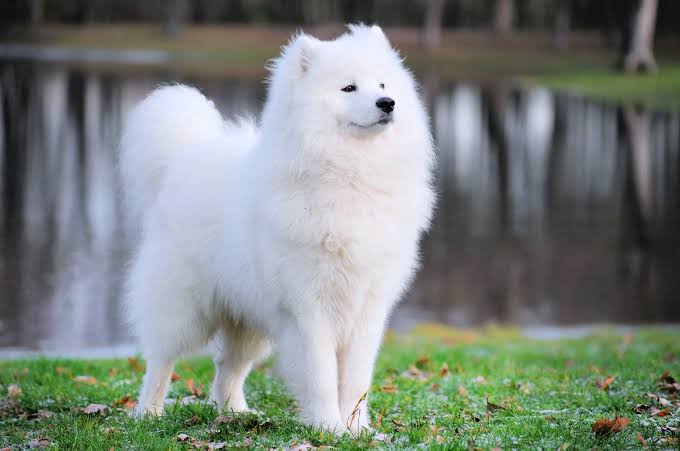
Spending extended time with Samoyeds in various environments helps determine true compatibility for allergy sufferers
Proper testing protocol: • Spend 2-3 hours with adult Samoyeds (puppies don't shed as much initially) • Visit multiple times over several weeks to test consistency of reactions • Test in enclosed spaces similar to your home environment • Include physical contact - petting, handling, and close interaction • Monitor delayed reactions for 24-48 hours after exposure Professional consultation is essential. An allergist can perform specific tests for dog allergens and help you understand your sensitivity levels. They can also advise whether immunotherapy might be an option. ⚠️ Important: Some people experience worsening allergies over time with continued exposure. What starts as mild symptoms can develop into more serious respiratory issues. 📋 ConclusionWhile Samoyeds make wonderful, loyal companions with their gentle nature and stunning beauty, their high allergen production requires careful consideration. Their double coat, heavy shedding pattern, and significant dander production make them challenging for most people with dog allergies. 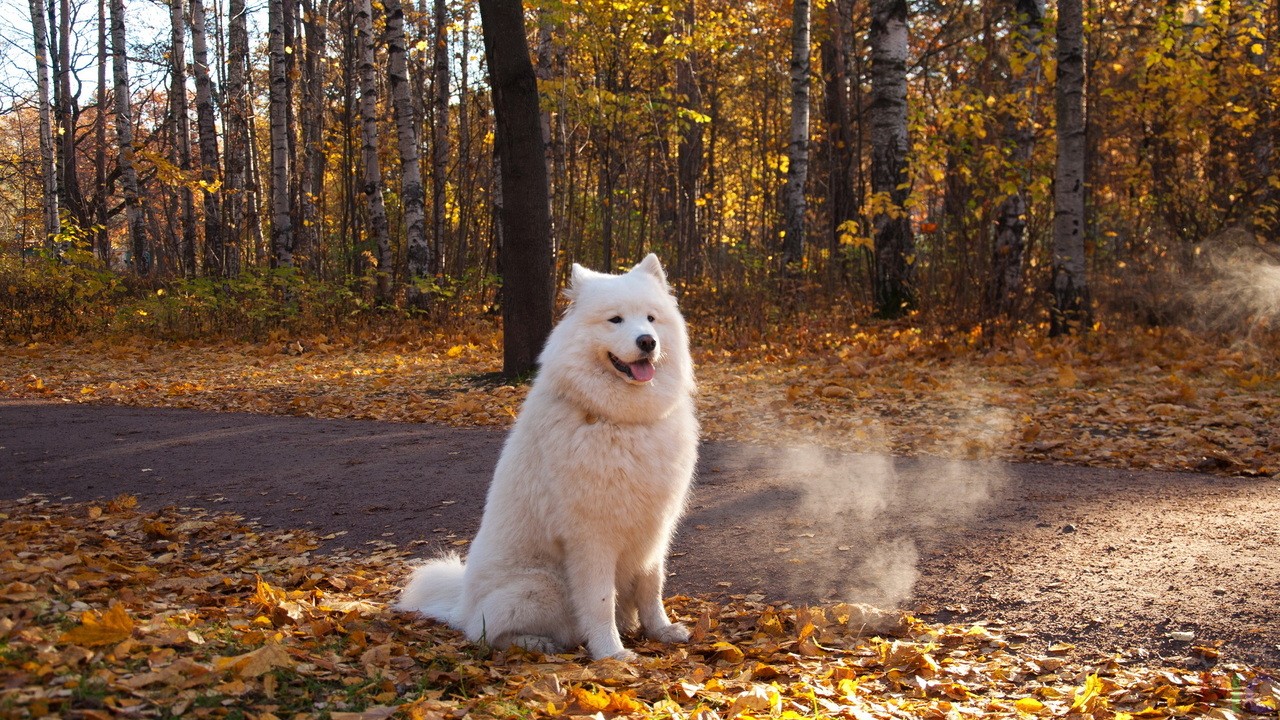
Samoyeds are truly magnificent and affectionate companions, though their allergen production requires thoughtful consideration for sensitive families
While these Arctic beauties make excellent family dogs for the right households, allergy sufferers should carefully consider hypoallergenic alternatives like Poodles, Portuguese Water Dogs, or other low-shedding breeds that might better suit their needs. Remember: choosing the right breed initially is much easier than trying to manage allergic reactions after bringing a dog home. Your health and the dog's welfare both depend on making an informed, compatible choice. ⬆️ Back to Menu❓ Frequently Asked Questions
Some Samoyed crossbreeds like Sammypoos (Samoyed + Poodle) may be more suitable for mild allergy sufferers, but there's no guarantee. Mixed breeds can inherit shedding traits from either parent, so testing individual dogs is essential.
Yes, Samoyeds are naturally vocal dogs. They were bred to communicate with their handlers across long distances. They bark to alert, when excited, and sometimes just to "talk." This trait, combined with their shedding, can be challenging in apartment settings.
Samoyeds are not ideal for small apartments. They're large, active dogs (45-65 lbs / 20-30 kg) that need significant exercise and mental stimulation. Their heavy shedding also makes small spaces difficult to keep allergen-free.
Samoyeds are intelligent but can be stubborn. They respond well to positive reinforcement but may challenge authority. Their independent nature, developed from centuries of working in harsh conditions, means training requires patience and consistency.
Samoyeds don't handle long periods alone well. They're social, pack-oriented dogs that can develop separation anxiety, leading to destructive behavior and excessive barking. Most need companionship or doggy daycare if left for more than 4-6 hours.
Samoyeds are generally gentle but not particularly calm. They maintain puppy-like energy well into adulthood and require substantial daily exercise. They're friendly and good-natured but need outlets for their high energy levels.
Yes, Samoyeds have two major shedding seasons - typically spring and fall when they "blow" their coats. During these 2-3 week periods, shedding increases dramatically. However, they shed moderately year-round as well.
Samoyeds need daily brushing and professional grooming every 6-8 weeks. During shedding seasons, daily brushing becomes even more critical. Regular grooming helps manage shedding but doesn't eliminate allergen production.
Yes, additional costs may include: high-quality air purifiers ($200-800), frequent professional cleaning, specialized vacuum cleaners, allergy medications, and potentially more frequent vet visits for both dog grooming and owner health management.
🐕 Looking for truly hypoallergenic breeds? Explore our comprehensive guides to Poodles, Portuguese Water Dogs, and other allergy-friendly companions that might be perfect for your family! | |||||||||||||||||||||
|
| |||||||||||||||||||||
| Переглядів: 43 | | | |||||||||||||||||||||
| Total comments: 0 | |
